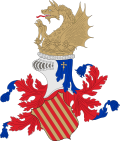This article needs additional citations for verification .(May 2024) |
Alpuente | |
|---|---|
 | |
| Coordinates: 39°52′40″N1°0′50″W / 39.87778°N 1.01389°W | |
| Country | Spain |
| Autonomous community | Valencian Community |
| Province | Valencia |
| Comarca | Los Serranos |
| Judicial district | Llíria |
| Government | |
| • Alcalde | Amparo Rodríguez Sambonet |
| Area | |
• Total | 138.3 km2 (53.4 sq mi) |
| Elevation | 1,000 m (3,300 ft) |
| Population (2024-01-01) [1] | |
• Total | 700 |
| • Density | 5.1/km2 (13/sq mi) |
| Demonym | Alpontino/a |
| Time zone | UTC+1 (CET) |
| • Summer (DST) | UTC+2 (CEST) |
| Postal code | 46178 |
| Official language(s) | Spanish |
| Website | Official website |
Alpuente is a town and municipality in the province of Valencia, part of Valencia, Spain.


